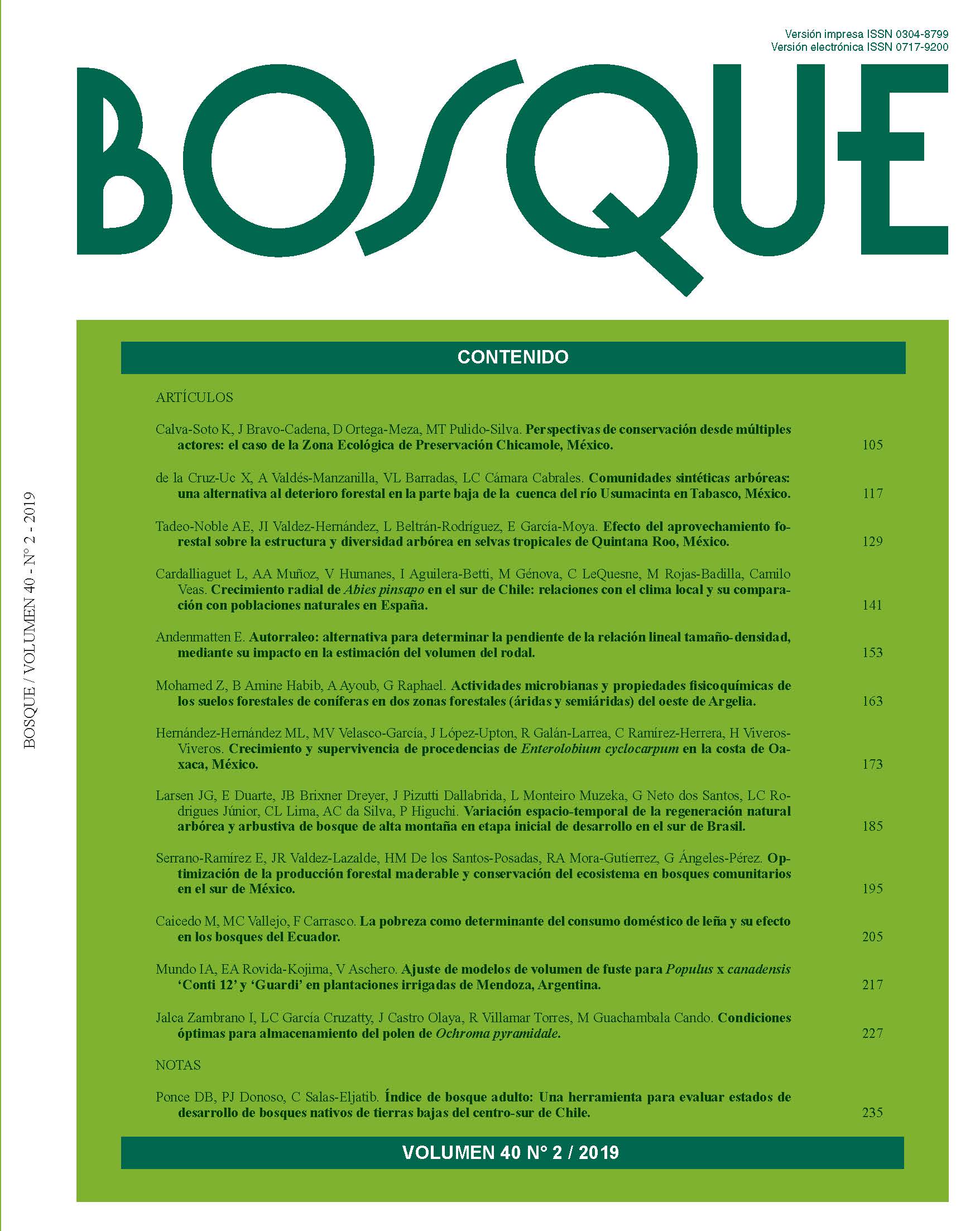Radial growth of Abies pinsapo in southern Chile: relationships with the local climate and its comparison with natural populations in Spain
Main Article Content
Abstract
The relationship between the growth of 43-year old specimens of an Abies pinsapo Boiss stand located in the city of Valdivia (Chile) and the climatic variability of this site was studied. The objectives were to define the climatic response function and identify the climatic variables and periods that regulate radial growth rates and to compare the annual radial growth with those characterizing two natural stands of the same species growing in Spain provinces, which, together with Morocco, shelters its last populations. Growth rates in Valdivia, Chile, were similar to or even higher than those in their natural habitat, showing a predilection for warm summers with little rain, as well as for abundant winter precipitation. In relation to the early wood (EW) and late wood (LW) series, the first one was related with prevalent dominant climatic conditions of the previous summer. This may be related to stored food. Late wood showed a climatic signal controlled by dominant conditions of the current growing season. These results indicate that the temperate-rainy climate in Los Ríos Region (Chile), milder than the mountain climate in its original habitat, favors the growth of this species and therefore constitutes an alternative habitat for its conservation. Here, summer temperatures favor its growth, differing from its natural habitat, where soil-water availability is the major factor controlling its growth. This information can be relevant for ex-situ conservation of one of the most severely threatened conifers by climate change and human pressure in the south of the Iberian Peninsula.

